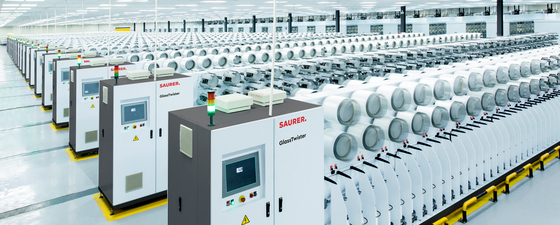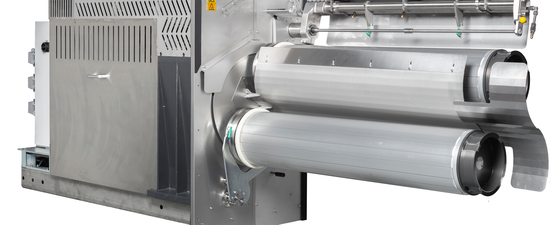More and more wind turbines are being installed in the sea. In the North Sea, the littoral states of Denmark, the Netherlands, Belgium and Germany are jointly planning to increase existing offshore capacity tenfold to 150 GW by 2050. Due to the higher and more continuous wind speeds over the ocean, offshore wind farms produce twice as much electricity as comparable plants on land. The extreme forces caused by wind, weather and tides require special technical solutions with regard to stability and production safety.
In the production of wind turbines, the use of glass-fibre reinforced composites has proven itself many times over. Glass filament yarns are an important component of these composite materials. Their special properties allow a high degree of flexibility in the rotor blades and compensate very well for the stresses caused by wind shear under changing wind loads. This is particularly important for rotor diameters of up to 125 metres. The use of glass filament yarns significantly reduces the weight of the wind turbine, which makes transport and assembly extremely easy. Without these state-of-the-art materials, it would not be possible to install these turbines effectively and make use of wind energy on the ocean.


